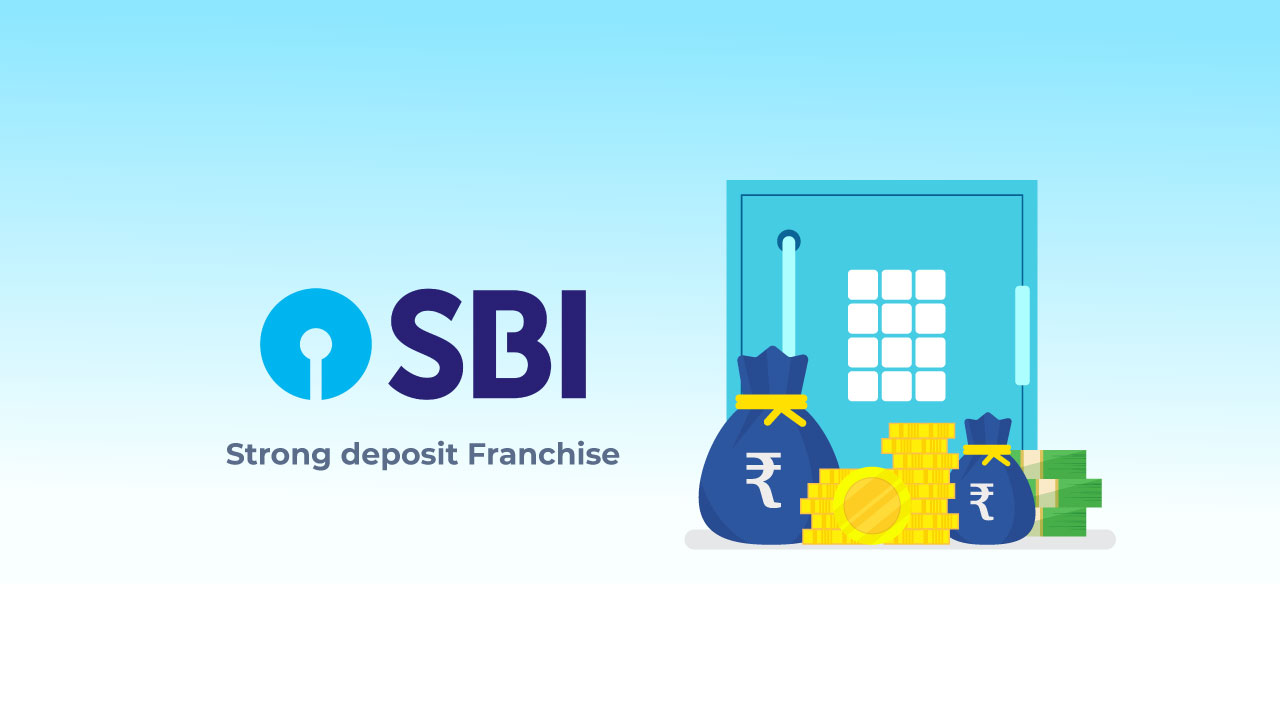Market Outlook for 06th December 2024
SBI: Strong deposit Franchise

Last Updated: 14th March 2023 - 03:10 pm
Indian Banks' have seen three cycles of RBI rate hikes since FY08 of which two were brief and one of them was after the economy gained strength (more comparable to the current one) after the Global Financial crisis. Of these two SBI’s net interest margins had a positive correlation to rising systemic interest rates (neutral in one) as the calibrated rise in the cost of funds, loan re-pricing, and deployment of excess liquidity helped (every 200bps change in domestic LD ratio can help net interest margins by 4-7bps).
SBI’s strong retail and CASA (Current account Savings account) deposit franchise strength are reflected in its ability to maintain deposit market share across sub-segment of deposits and population groups with the last reported data of FY17 indicating strong contribution from non-metros. This provides SBI with deposit granularity, stability, and longer tenure, therefore, building resilience in the cost of funds as seen in the previous cycles. Adding to this SBI’s domestic loan to deposit ratio of 61% vs. 70% should enable the bank to take calibrated deposit rate hikes. Thus, the construct of liability is well placed to handle the rise in systemic interest rates.
SBI is better positioned to withstand mark-to-market hit in a rising interest rate environment as the bank has reduced the Available-for-sale (AFS) proportion of its book over the last few quarters and lowered the duration of the portfolio to 2 years and booked lower treasury gains, thereby taking the adverse hit on investment profits in the short term and trying to protect itself from the adverse hit in the medium term.
Overall, the loan growth witnessed an improvement to 8.9% YoY and despite a stressful corporate cycle and de-risking the book, SBI had been able to report loan growth in line with the industry average and maintain market share. This has been achieved by the bank as they demonstrated their ability to grow retail loans at 16% CAGR over the past four years which was only marginally lower than the large private banks. Moving ahead while retail lending growth would be the fastest-growing, but a pick-up in SME/Corporate book (utilization levels were low at 43%) due to increase in working capital demand and shift from the bond market to loans should help and protect further reduction in loan growth estimates.
Asset quality has been resilient over the past few quarters aided by improved underwriting and focuses on customer engagement and recovery. The retail book had gone through some form of the test due to COVID in the current cycle. There could be some pressure from the MSME segment and a higher proportion of international books (though it is well diversified in different geographies and to top-rated Indian corporate-related entities and management had re-iterated their comfort on this segment.
In the last fifteen years, the valuation multiples of SBI had been positively correlated to the interest rate and economic growth. This time as well interest rate is expected to have bottomed out and any trends on firming of economic growth to be positive for the stock.
- Flat ₹20 Brokerage
- Next-gen Trading
- Advance Charting
- Actionable Ideas
Trending on 5paisa
Market Outlook Related Articles
Disclaimer: Investment in securities market are subject to market risks, read all the related documents carefully before investing. For detailed disclaimer please Click here.
 5paisa Research Team
5paisa Research Team
 Sachin Gupta
Sachin Gupta




